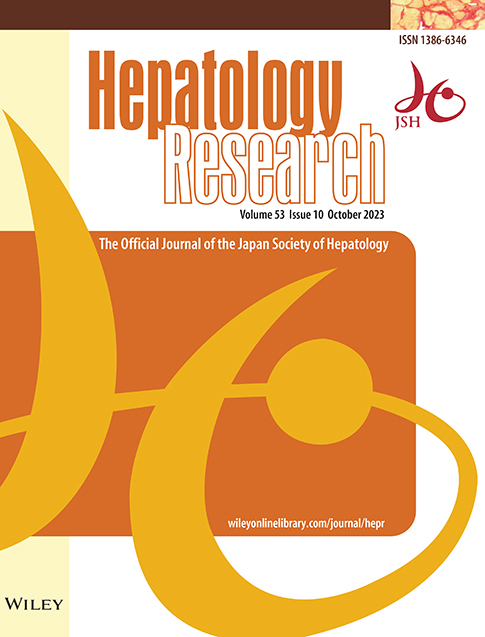Tumor steatosis and glutamine synthetase expression in patients with advanced hepatocellular carcinoma receiving atezolizumab plus bevacizumab therapy
Yutaka Kurebayashi, Hanako Tsujikawa, and Katsutoshi Sugimoto contributed equally to this work.
Abstract
Aim
The anti-programmed death-ligand 1 antibody atezolizumab and vascular endothelial growth factor-neutralizing antibody bevacizumab in combination (Atezo + Bev) have become the first-line therapy in advanced hepatocellular carcinoma (HCC). Distinct types of tumor immune microenvironment (TIME) and their associations with specific molecular subclasses and driver gene mutations have been identified in HCC; however, these insights are mainly based on surgically resected early-stage tumors. The current study aimed to reveal the biology and TIME of advanced HCC and their significance in predicting clinical outcomes of Atezo + Bev therapy.
Methods
Thirty-three patients with advanced HCC who were scheduled for treatment with Atezo + Bev therapy were included in this study. Pretreatment tumor biopsy, pre- and posttreatment diffusion-weighted magnetic resonance imaging (MRI) with nine b values (0–1500 s/mm2), and other clinicopathologic factors were analyzed.
Results
Compared with resectable HCC, advanced HCC was characterized by higher proliferative activity, a higher frequency of Wnt/β-catenin-activated HCC, and lower lymphocytic infiltration. Prognostically, two metabolism-related factors, histopathologically determined tumor steatosis and/or glutamine synthetase (GS) expression, and MRI-determined tumor steatosis, were the most significant prognostic indicators for progression-free survival (PFS) and overall survival after Atezo + Bev therapy. Furthermore, changes in the pre- and posttreatment true diffusion coefficients on MRI, which might reflect changes in TIME after treatment, were significantly associated with better PFS.
Conclusions
The biology and TIME of HCC were strikingly different in advanced HCC compared with those of surgically resected HCC. Two metabolism-related factors, pathologically determined tumor steatosis and/or GS expression, and MRI-determined tumor steatosis, were found to be the most significant prognostic indicators for Atezo + Bev therapy in advanced HCC.
CONFLICT OF INTEREST STATEMENT
Michiie Sakamoto received grants from Eisai. The other authors declare no conflict of interests for this article.
Open Research
DATA AVAILABILITY STATEMENT
The data that support the findings of this study are available on request form the corresponding author. The data are not publicly available due to privacy or ethical restrictions.




